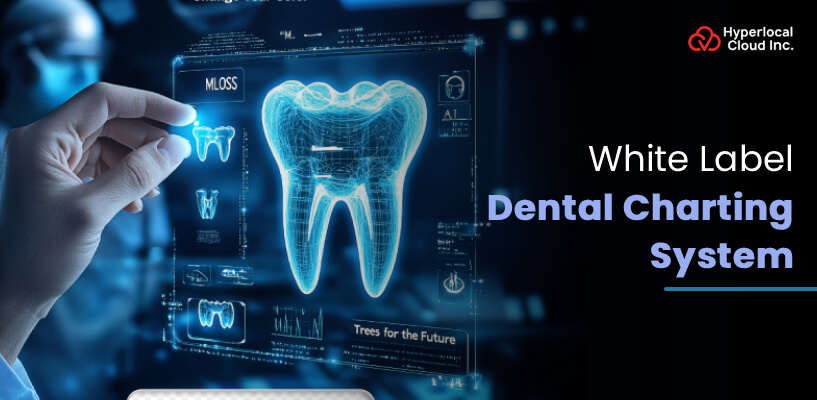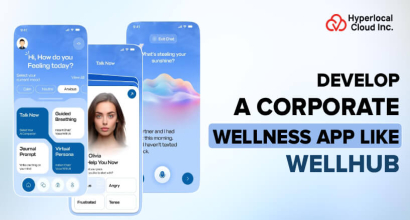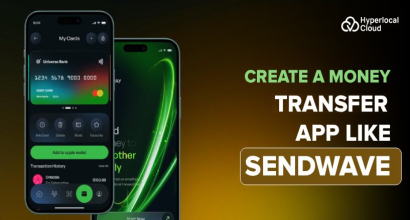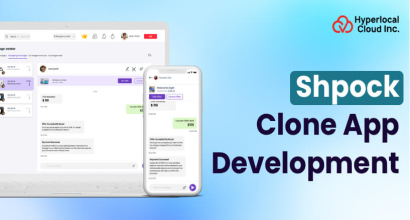In dental treatment, technology plays an important role that enables dental personnel to provide better and advanced care to their patients. One of the most important technical equipment that has become popular in recent years is dental charting software. This software enables dentists to maintain a dental record of the patient's dental health, plan treatment, and manage their daily workflows in an organized way.
Imagine a dental software company or a dental clinic that wants to offer its own dental charting software in the shortest time period. This is the place where a white label tooth charting solution becomes a game-changer.
In a fast-evolving digital world, the dental industry is also seeking a digital solution that enables dentists to replace paperwork, increase accuracy, and enhance patient care. At the same time, experienced mobile app development companies want to redeem this increasing demand quickly and efficiently, making white label solutions very attractive.
What is a Dental Charting Solution?
A dental charting solution is a type of software designed to help dental professionals manage patients' oral health. In past years, dentists typically used paper diagrams of the mouth or a tooth on which they labeled the exact problem and suggested treatment accordingly to the patient. However, the software digitizes the process and offers a computer-based version that is easy to update, save, and share. This software usually shows a graphical representation of the human mouth, including all teeth, gums, and sometimes jaws. The dentist analyzes the tooth structure and, based on the chart, they diagnose the problems.
Launch Your Own Dental Tech Brand
How Does a Dental Charting System Work?
A dental charting system is a digital platform that provides dentists with a digital view of the human mouth, enabling them to analyze tooth problems and recommend the most effective treatments. Below is the detailed overview for the same, which is discussed.
1. Patient Registration
Patients are required to provide their personal details, which include their name, age, gender, dental history, and insurance information. The entire patient detail has been successfully entered into the software.
2. Digital Mouth Representation
The software shows a visual model of the patient's mouth. This model includes all 32 adult teeth or pediatric sets for children, as well as gums and, in some cases, surrounding structures. It is an easy-to-understand and interactive stage.
3. Recording Dental Conditions
A dentist or dental assistant can choose each tooth or area on the digital chart. They can mark different dental conditions using colors or symbols. For example, a red color may indicate decay, while blue may indicate a filling. They can also add notes while explaining each situation.
4. Planning Treatments
Depending on the tooth diagram, the dentist can create a treatment plan. The scheme may include processes such as fillers, extracts, root ducts, transplantation, or orthodontic functions. Each treatment can be prescribed and preferred.
5. Progress Tracking
As the journey of each patient changes according to their medical condition, the dental charts also evolve to reflect new results for further treatment. This will enable dentists to track the patient's progress.
6. Integration and Sharing
Many dental mapping solutions are integrated with other dental practice management units. This patient makes it possible to have a comfortable relationship between agreements, invoicing, and treatment plans. Mapping data can be safely shared with patients or experts if necessary.
7. Reporting and Analysis
Software can generate reports for both patients and dentists. These reports can prepare the patient's dental health condition, provide an overview of employee treatments, or expand the related costs.
Why Invest in a White Label Dental Charting Solution?
A white label dental charting solution comes with a wide range of benefits that help businesses grow affordably and efficiently. Have a look at the information below to understand why to invest in a white label tooth charting software.
1. Faster Market Entry
A significant time is required to develop software for tooth mapping from scratch, including planning, design, and coding. With a white label solution, the core product is already made and tested. Companies can focus on branding and adaptation, enabling them to start their products faster.
2. Lower Development Costs
Building software requires an effective team of developers, sensors, and designers. It also includes several rounds of updates and bug fixes. White label solutions help companies avoid these heavy start-up costs, as the software has already been developed.
3. Custom Branding
White label dental charting software can be customized with the company's logo, colors, and style. This allows your company to introduce a professional image and build brand loyalty without any additional expenses for software design.
4. Reliable and Tested Technology
White label solutions often come from companies that specialize in dental software programs. These products are made with the best practices for the industry and tested with real users. This reduces the risk of software failure or poor user experience.
5. Scalability and Updates
Experienced and reputable white label solution providers deliver ongoing software updates, security updates, and convenience improvements. It keeps your product up to date with the latest technology and government requirements, which requires minimal effort.
Features and Functionalities of a Dental Charting Software
Dental charting software typically offers numerous advanced and exciting features for the user panel, the dentist panel, and the admin panel. For a brief overview, go through the information mentioned below.
User Panel (Patient Portal)
1. Personal Profile Management
Patients are eligible to manage and update their profiles by changing their profile photos, insurance policy, and current dental status.
2. Appointment Scheduling
As the name suggests, this allows patients to easily manage their appointment booking by scheduling, resetting, or canceling it.
3. Access to Dental Records
With the help of this feature, patients can safely see the tooth maps, treatment history, X-rays, and clinical notes.
4. Treatment Plans and Estimates
The feature helps patients to oversee detailed treatment plans, including cost estimates and proposed procedures.
5. Payment and Billing
With this, patients can easily check out the payments and the bills. This will help the patients track the overall payment.
6. Secure Messaging
Secure messaging enables patients to communicate directly with dentists or office staff to ask questions or clarify doubts.
7. Reminders and Notifications
Patients will acquire automated reminders for upcoming appointments with the dentist. The feature will make the patient up-to-date.
8. Educational Resources
The dental charting software provides educational resources that include knowledge of dental care, prevention, and treatments to help individuals achieve optimal health.
Dentist Panel
1. Interactive Dental Chart
A visible and interactive mouth map where the dentist can mark the teeth position, restoration, lack of teeth, and other deviations with color-coded symbols.
2. Real-Time Chart Updates
Dentists are able to easily place the patient record during examination or procedures for accurate and timely documentation.
3. Treatment Planning
Dentists analyze, change, and track treatment plans to fit individual patients. Dentists can also attach notes, determine preferences, and plan follow-up trips.
4. Periodontal Charting
Register and monitor gum health, including the depth of the pocket, bleeding point, and tissue recession.
5. Imaging Integration
For better diagnosis, the feature enables dentists to view additional tooth diagrams, as well as X-rays, intraoral images, or 3D scans.
6. Clinical Notes
Dentists use clinical notes in order to document observations, symptoms, and clinical decisions for each patient.
7. Alerts and Reminders
The feature helps dentists access patient treatment details when the patient misses an appointment or receives immediate care.
8. Patient History Access
Dentists can access to review patients' earlier treatments, allergies, medicines, and other health records.
9. Analytics and Reports
The feature helps dentists to create a detailed report on the patient's progression, treatment results, and general clinical efficiency.
10. Multi-Device Access
Anywhere inside the clinic, dentists can use desktop machines, tablets, or even smartphones to reach patient data at any time.
Admin Panel
1. User Management
Add, edit, or remove users, including dentists, hygienists, assistants, and patients. Assign different roles and access permits depending on tasks and responsibilities.
2. Appointment Management
Admins oversee the calendar of the entire dental clinic, assigning time tracks, managing cancellations, and optimizing planning for maximum efficiency. This will be more secure due to the integration of an EHR software.
3. Billing and Payments
The patient manages invoicing, generates challenges, tracks payment, processes insurance requirements, and handles the refund.
4. Data Security Controls
Monitor access logs, enter password policies, and ensure compliance with health data rules such as HIPAA.
5. Backup and Recovery
This feature allows admins to plan regular backups and manage data alignment to prevent loss of important patient records.
6. Practice Reporting
Access the Business Intelligence Report, which includes income trends, patient frequency, and productivity for employees.
7. Communication Management
Specify and monitor automatic reminders, information, and mass communication campaigns to ensure timely patient communication and engagement.
8. Software Customization
Customize the template, processing code, user interface settings, and integrate with other software tools used in the clinic.
9. Support and Maintenance
The feature will enable the admins to provide technical support to the patients and dentists by resolving their queries.
Build Your Brand with Our Customizable Charting System!
AI Advancement in the Dental Charting Software
AI enhances the dental charting software in so many ways. There are several benefits that the software gets from the integration of artificial intelligence. Just have a look:
1. Automated Detection of Dental Issues
AI algorithms can analyze digital X-rays and images to detect cavities, cracks, or gum disease. This helps dentists first to capture problems and reduce the possibility of their disappearance.
2. Predictive Analytics
This feature predicts future dental problems, including the risk of cavities and periodontal disease. With the help of this, dentists can provide preventive measures to the patients.
3. Speech-to-Text Capabilities
During the chart examination, the dentist verbally makes some notes that artificial intelligence converts into text. This advancement makes the work of dentists easier.
4. Treatment Suggestions
AI can recommend treatment options based on the patient's guidelines for current status and guidelines for best practice. This supports dentists in making informed decisions.
5. Workflow Automation
The AI agreement helps automate repetitive tasks, such as reminders, billing, follow-up, and patient communication.
Steps to Build a Dental Charting Software
There are several steps involved in the development of dental charting software. To make the platform user-friendly, efficient, and robust, you can also consider the following strategies in your business.
1. Conduct Market Research
Understand what dentists need to map software. Study your rivals and identify the most important features that matter most to them. Collect feedback from dental people about pain points with current solutions.
2. Design UI and UX
Develop wireframes and prototypes that make the software comfortable and user-friendly. Since users are often not technical experts, simplicity is important. The interface should be visually clear and easy to navigate.
3. Development Process
The development process is usually done by utilizing two steps that are completely different from each other. However, these methods affect cost and deployment time, along with tech advancement and team expertise. The first step is a custom app solution that is quite high in cost and takes almost a year to be launched in the market. At the same time, development by using white label solutions is the most affordable method for businesses that want to enter into the market in a short time period.
4. Testing and Quality Assurance
Test the software completely to identify errors and determine problems. Include real dental personnel in the response.
5. Launch
The application is now ready for a smooth launch on the different operating systems. This is a convenient method for users to utilize the application in a wide range.
6. Maintenance and Updates
It is the responsibility of a custom software development company to provide continuous support, fix errors, and release updates to continuously improve the software.
For Whom is Dental Charting Software?
A white label dental charting software is useful for many healthcare experts who are connected with different industries. The primary ones are mentioned below.
1. General Dental Practices
Small and large dental clinics use this software daily to manage patient records, plan treatment, and improve efficiency.
2. Specialized Dental Clinics
Orthodontists, periodontists, prosthodontists, and oral surgeons benefit from customized map functions that fit their respective specialties.
3. Dental Laboratories
Depending on the dentist's treatment plan, the data from the Lab Dental Charting software is used to create dentures and tools with accurate data.
4. Dental Software Companies
Developers and suppliers who want to integrate dental mapping as a module into a large practice management system often use white label solutions.
5. Educational Institutions
Dental and fitness centers use these units to educate students about dentists, diagnosis, and treatment schemes.
Future Trends in Dental Charting Solutions
Several trends exist that could be implemented in the future to enhance dental charting software. Understand the statement by reviewing the information below.
1. Augmented Reality and Virtual Reality
Assume that dentists can visualize a patient's 3D model of teeth and gums in an authentic moment during an examination or procedure. With the merger of AR and VR technologies, this will become possible in the future.
2. Blockchain for Secure Records
Data privacy and safety are notable in the healthcare procedure. In the future, the software can use blockchain to ensure that patient data is protected from unauthorized access and can be safely shared among dentists, experts, and insurance corporations.
3. Voice-Activated Charting
When voting recognition technology continues to improve, dentists may be able to update the patient map by talking during the consultation soon. This hand-free approach will save time and allow dentists to focus more on the patient instead of manual data entry.
4. Advanced AI and Machine Learning
AI will be more intelligent and offer more accurate diagnoses and personal treatment plans. Machine learning models can analyze large amounts of tooth data to identify micrometric patterns.
5. Wearables and Remote Monitoring
Since portable health equipment quickly becomes popular, dental mapping solutions can integrate data from devices that monitor oral health matrix, such as saliva pH, teeth grinding, or jaw speed.
Schedule a Free Demo of Our White Label Charting Platform!
Challenges in Dental Charting Software Development and Adoption
Numerous challenges exist that businesses will face during the development and adoption of dental charting software. Just have a look:
1. Integration with Existing Systems
Many dental clinics already use practice management software, invoicing systems, and imaging tools. Integrating a new dental charting software with these existing platforms can be a complex process.
2. Data Security and Privacy Concerns
Dental software is related to the information of the sensitive patient. To ensure that the software complies with health services rules such as HIPAA in the US or GDPR in Europe, it is necessary.
3. Customization and Scalability
There is great variation in dental practice when it comes to size and characteristics. The software that works well for a normal dentist cannot meet the needs of a jaw oral surgeon.
4. Keeping Up with Regulatory Changes
The rules and standards of the healthcare system often develop. The software must be updated to remain regularly up-to-date, requiring continuous development efforts and vigilance from suppliers.
5. Connectivity and Infrastructure Issues
In some fields, reliable internet access or IT infrastructure may be missing, limiting cloud-based dental map software. However, hybrid solutions may be necessary to serve these markets.
Avail the Steps to Monetize the Dental Charting Software
To grow your business, introduce monetization strategies to earn a good income through dental charting software. Let's have a look:
1. Subscription-Based Model
Charge the monthly or annual fee to users to access the software. Offer different price levels depending on the number of users, functions, or support levels.
2. One-Time Licensing Fee
Sell software for easy payment in advance. Provide alternative payment options, upgrades, or support contracts. Users can pay a one-time fee to leverage the platform.
3. Freemium Model
Provide an original version of the software for free. Fee for advanced facilities such as AI diagnostics, advanced reporting, or extra storage.
4. Data Analytics Services
Provide detailed analysis reports and insights as a first-class service to dental clinics to improve practice management. This is an additional, yet highly effective, revenue generation model.
5. In-App Purchases
Let users buy multiple modules, special equipment, or expanded software support functions. This approach will help your business boost your income.
6. Advertising and Sponsorships
This is an additional revenue stream that helps your business generate revenue by running healthcare or dental-related ads on the platform.
Kickstart Your Business Journey with a Dental Charting System!
Hyperlocal Cloud, a leading name in the market and recognized as a top-notch healthcare software development company, is poised to cater to your business needs. Get our expertise at an affordable price, as we offer dental charting software development at $8,000. From technological advancement to an accurate implementation, our team of tech experts has a proven track record in delivering a project on time. Still confused? Get our free consultation to enter the healthcare market with a robust digital software.



